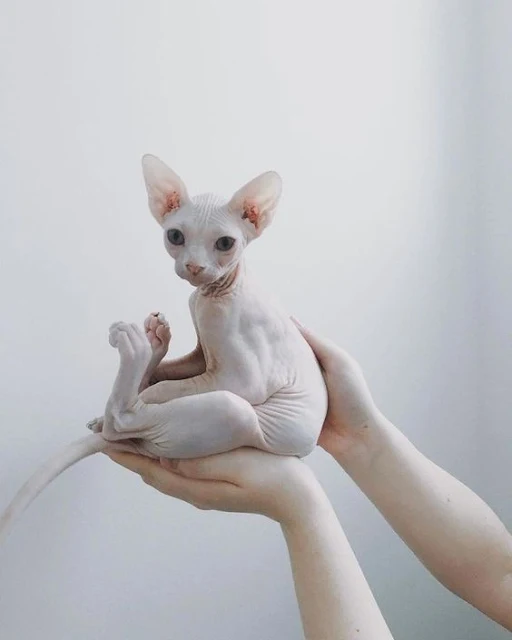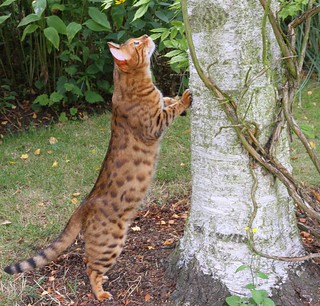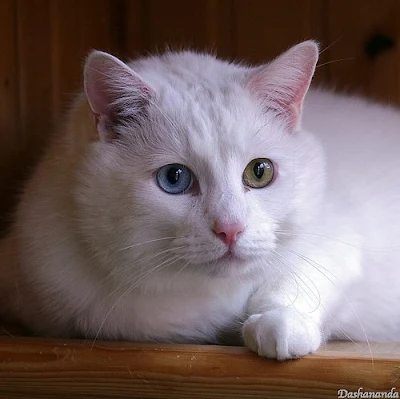 |
| Sphynx cats can have oily skin which smells unless bathed regularly. Picture in public domain. |
Often there is a downy coat particularly in kittens and on the muzzle, nose, tip of tail, for example.
The gene that produces a hairless cat is not confined to the Sphynx cats. I'm talking of the Sphynx (Canadian) and the Don Sphynx (Russian).
It is possible to think that these are the only hairless cats, which as stated is not the case. The Donsky is more hairless apparently than the Sphynx, perhaps due to the dominant gene producing hairlessness in the Donsky allowing for more efficient breeding.
Another notable hairless or semi-hairless cat is the Peterbald an associate or relative of the Don Sphynx (same founding cat). This cat breed was created in 1993 (a cross between the Don Sphynx and Oriental/Siamese).
There have been numerous occurrences of the manifestation of the phenotype (physical attributes) of the mutant gene over the years as it pops up here and there. There is a link with the Rex coat as well.
The Rex coat is crinkly and curly. Some Don Sphynx kittens have a Rex coat until adulthood. The Don Sphynx whiskers are often crinkly and brittle to the point where they snap off.
The Rex coat is found on cats such as the Laperm and Devon Rex. The Devon Rexes are prone to baldness (hairlessness) so you can see link between these genetic traits.
Sarah Hartwell records the occurrences of hairless cats on her website.
Here are some recorded instances:
- Latin America
1830
- Paraguay "Scant-haired cat"
1902
- Mexican Hairless (Mexico)
1932
- Le Chat Nu (the naked cat)
- France
1930s?
- "Cat-Dog", Carolina, USA
1950
- Paris France - two hairless cats born to Siamese cat
1963
- Toronto, Canada
1978
- Toronto, Canada - hairless street kittens
1978
- England - hairless Birman kittens
1981, 1984
- England - reports of hairless kittens
2002
- Hawaii - Hawaiin Hairless
There are other examples and there will be more no doubt in the future, occurring randomly of their own accord.
The gene that produces the hairlessness is dominant for the Don Sphynx and recessive for the Sphynx.
The gene for the Donsky (dominant) is labelled "Hp" and the gene for the recessive (Canadian) Sphynx is labelled "hr".
There are apparently two other recessive genes producing hairlessness (there may be more) and these are the French "h" and the British "hd".





































